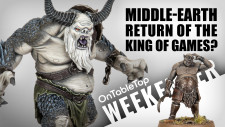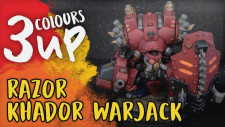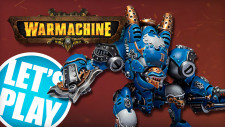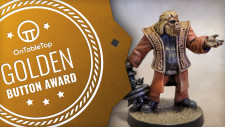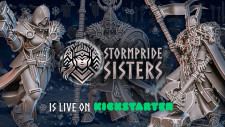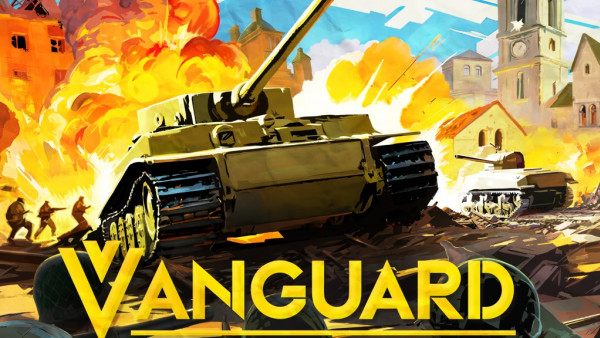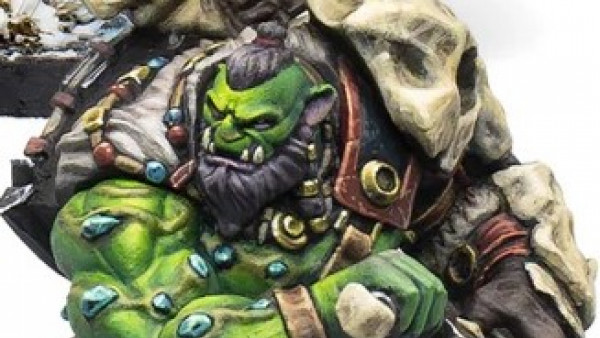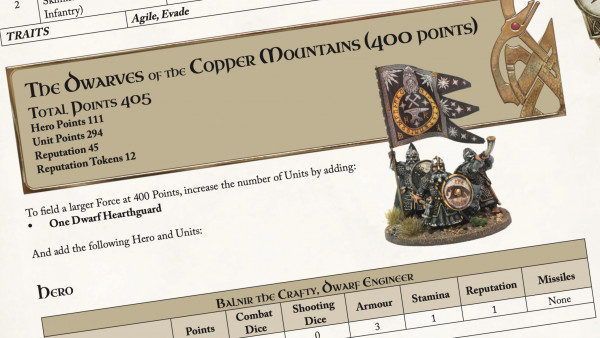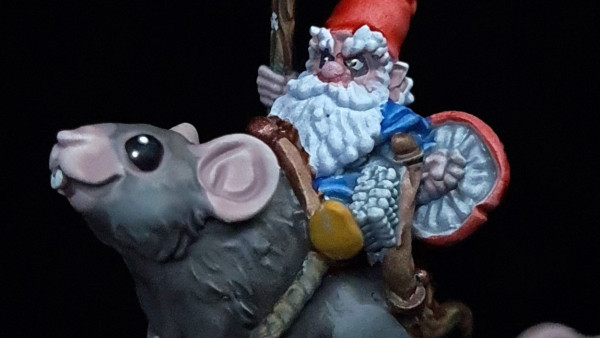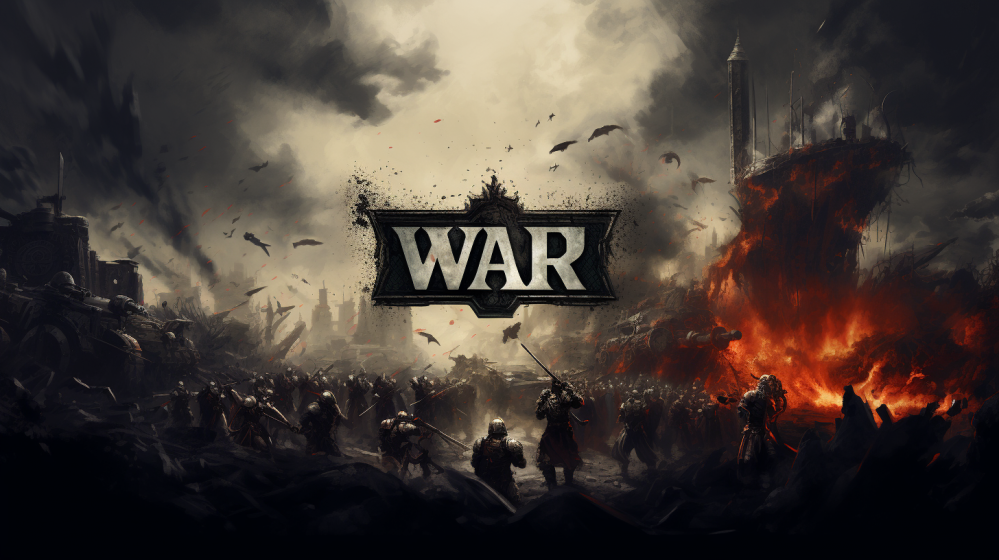
WAR – An Open Source War Game
Recommendations: 15
About the Project
In XLBS Episode 466 - we discussed the ins and outs of a single open source wargaming system. This is a project to explore how that might look.
Related Genre: General
This Project is Active
 Using SAGA for an example
Using SAGA for an example
Using SAGA’s core rules couldn’t be simpler, a unit can be activated to move, shoot, or if it charges into contact, fight, and rest.
To play stripped-down SAGA you’ll need a tape measure, and some tokens to mark fatigue.
The first activation in a phase never causes fatigue, the subsequent actions will add 1 fatigue to a unit and units that fight in a melee will generate an additional fatigue at the end of the combat.
RESTING
- This must be the unit’s first activation in a turn and allows you to remove one fatigue token
- A unit may only rest once per turn.
MOVEMENT
- Infantry move up to 6″ unless any part of their move is through difficult ground in which case it is reduced to 4″
- Cavalry moves up to 12″ unless any part of their move is through difficult ground in which case it is reduced to 6″ and they gain a fatigue at the end of the move.
SHOOTING
- Declare the shooting unit’s target and check for line of sight and cover
- Measure the distance to the closest target model and check how many of the shooting unit is within range
- Starting with the attacker spend any fatigue on the units involved in the combat
- Calculate the number of attack dice generated and roll to hit versus the armour of the target. (This may be modified by spent fatigue) Any dice that equal or exceed the armour of the target are successes
- Roll the successful dice to check for saves, a model saves on a 4+ or a 3+ if they were in cover.
- Remove any unsuccessful saves as casualties
MELEE
- Declare the unit’s intention to charge
- Measure the range from the closest model in the attacker’s unit to the closest model in the target unit.
- If they are within movement distance then move the unit into base contact trying to get every model as close to an enemy as possible.
- If there are any remaining models in the target unit not in base-to-base contact move them up to 2″ to try to engage as many models as possible.
- Calculate the number of attack dice for both units. If able the Defender may choose to close ranks.
- Closed ranks halves the number of attack dice in their pool but increases the save of the unit to 4+
- Starting with the attacker spend any fatigue tokens on the unit, alternating until either all fatigue is exhausted or both players choose to pass
- Combat is simultaneous, so casualties do not affect the number of dice rolled but it’s nice to start with the attacker’s rolls.
- Roll attacks and saves for both units and remove casualties.
- In Melee a model saves on a 5+ unless they closed ranks or are defending an obstacle. These do not stack 4+ is the greatest save you can get.
- The unit that caused the most casualties wins the melee and the loser must retreat 4″.
- In the case of a tie, the defender wins and the attacker must retreat having failed to break the lines
- If a unit is completely wiped out all friendly units within 4″ of the unit at the start of the combat must take a fatigue token.
- Any surviving units gain an additional fatigue after the combat has been resolved.
FATIGUE
- Fatigue may be spent in several ways, as both an interruption to a declared unit’s action or in response to a combat action.
- After a unit has declared any action the opponent may remove TWO Fatigue from the activating unit to cancel the action completely. If the unit still has actions left it can use the other actions to declare the same action again.
- An opponent may remove a Fatigue to half the movement of a unit
- A target of a shooting attack may remove a Fatigue to raise the unit’s armour by +1.
- Shooting Attackers may not spend their targets Fatigue to lower their armour
- In Melee Fatigue can be spent to raise your own units armour by +1 per Fatigue spent, or lower your opponents armour by -1 per Fatigue.
UNIT TYPES
The following units are available to build your lists, the stat line per model is displayed in the following way;
Name of unit, Armour, Dice Generated Melee, Dice Generated Shooting
- Warlord: Armour 6, 8, 8
- Elite: Armour 5, 1, 1
- Warrior: Armour 4, 1, 1/2
- Levy: Armour 4, 1/2, 1/2
RECRUITING
- Your Warlord is free, but every other unit you recruit costs 1 point
- Games can range from small 4-point affairs to large 10-point games.
- When recruiting a unit the quality of the troop determines both the above stat line and the amount of figures in the unit
- An Elite unit contains 4 models
- A Warrior unit contains 8 models
- A Levy unit contains 12 models
- Units of the same type with the same equipment can be merged before the game begins or divided up.
- No unit can be larger than 12 models strong or smaller than 4 models when the game begins.
- As an example in a 6 point game I recruit 2 units of Elites, 3 Units of Warriors, and 1 Levy unit. I equip the Elites with heavy weapons and merge them into one unit of 8 models, the Warriors I group into two units of 12 models, and the levy I equip with Javelins and split into two units of 6 models.
- Units do not have to be split evenly.
EQUIPMENT
All units in the game start with a shield and some sort of hand weapon, spears, axes and swords are typical. This equipment results in the unmodified stats based on their quality as above.
Any equipment that they are given after this replaces the standard sword and board and may alter their stat line and are noted below.
- Heavy Weapons; reduce units armour by -1 in Melee. All dice rolled to hit in Melee gain +1 attack modifier.
- Javelins; reduce units armour by -1 in Melee. All dice rolled to hit in Melee gain +1 attack modifier on the charge only. May also be used as a shooting attack with a 6″ range.
- Bows and Slings; reduce unit’s armour by -1 against Melee and Shooting attacks, 12″ range
- Crossbows; reduce unit’s armour by -1 against Melee and Shooting attacks, 12″ range may only be fired once per turn due to slow reloading
- Black powder Guns; reduce unit’s armour by -1 against Melee and Shooting attacks, 12″ range may only be fired once per turn due to slow reloading. All dice rolled to hit gain +1 attack modifier.
- Mounted; reduce unit’s armour by -1 against Shooting. The unit increases its move to 12″ as per cavalry, it may never claim a cover defensive bonus in Melee. Mounted units may be equipped with other weapons.
 Profiling Units, Equipment and Weapons
Profiling Units, Equipment and Weapons
At its core everything resolves around the profile stats of any given unit. So let’s think about how we describe things in a war game.
A Unit (Whether that be one or more characters) will often need the following descriptors
Name
Points (the cost of this unit or part thereof)
Type (do all units fall into a specific classification?)
Movement (how they move)
Melee Skill (how effective are they at close combat fighting)
Ballistic Skill (how effective are they are at using weapons)
Toughness/Defence (how tough are they)
Strength (how strong are they)
Size/Height (Indicator of volume of the unit)
Armour (how effective is their armour)
Health/Wounds (how many wounds can they take)
Leadership (how effective is their leadership)
Morale/Nerve/Bravery
Save (saving throw to shake off hits or wounds)
Any Special Rules
A weapon may have the following
Range
Attacks (number of dice to roll for the attack)
Armour Penetration/Rend (ability to negate armour)
Damage (damage inflicted per successful wound)
Special Rules
The key is distilling it down to a coherent set of descriptors and work out how they interact with one another.
 Turns and Activation
Turns and Activation
As good a place to start as any!
So one of the goals of the game is to facilitate one interesting game in an evening. Something two players can really get their teeth into.
As a nod to the ADHD folk among us (myself included!) I’m going to try and avoid the whole “I do everything then you do everything – 40K approach” – as ultimately many of us just switch off while we’re waiting, and the lack of reactions is pretty frustrating too.
So I’ve set about thinking about how a battle plays out and what other systems have done to alleviate the ‘boredom factor’. Three games came to mind, Infinity and its ARO system, Bolt Action and the Random Activation System Drawing from the Bag, and Reichbusters, where threat builds over a number of rounds.
So I started to feel an idea develop. Every great story has three acts, a beginning, middle and end, and for many of us who played 40K we’ll remember the 7 turn limit. So for this game I’m going to explore the following activation system.
1) A game has a maximum of 9 rounds, and that is split into three acts of three rounds.
2) Mobilisation (Rounds 1 – 3) For every unit on the table each player gets a single dice in a colour (player one red, player two blue for example). Each player then takes turns at activating a single unit (and that unit can perform two actions) activated units are marked by placing the dice beside them to show they have activated.
3) Fog of War (Rounds 4 -6) The middle act we want to start introducing more uncertainty to the game, so for these three rounds a single dice for each unit is placed in a bag and players then draw the dice at random from the bag. Again a unit can perform two actions, and like before the dice mark what units have activated.
4) Do or Die! (Rounds 7 – 9) *Remember a game may or may not make it to this stage, but if it does we now want to add another layer of chaos and heroics to the mix. So for these three rounds, not only are the activation dice drawn randomly from the bag, but once drawn the player nominates the unit being activated and then rolls the die. On the roll of a 1 – the unit only gets a single action, on a roll of a 2-5 the unit gets to perform two actions and on the roll of a 6 the unit can perform three actions.
On completion of Turn 9 (If it makes it that far!) the game ends and Victory Conditions are consulted to see the outcome.
So three acts start with a benign and in control vibe, which leads to the inevitable fog of war before reaching a chaotic climax of heroics and failure. – That should give the foundations for some interesting stories!
 Establishing some goals and constraints
Establishing some goals and constraints
In a recent episode of XLBS, myself and the team were discussing the possibility of a core set of wargaming rules that would facilitate lots of genres and just be detailed, interesting and fun to play. And allow us to just get more games in regardless of the flavour wed like to play.
This list of goals and constraints will grow and change as the project develops.
-
A single standard game in an evening
-
Detailed points system facilitating nuanced army building with subtle options
-
Select a single style of dice (Exploring D6 initially)
-
Interesting and engaging Activation and Turns
-
Explore other interesting game mechanics (such as all actions contained within a players turn facilitating a KOW chess clock type game)
From here I’ll start exploring some options…
































